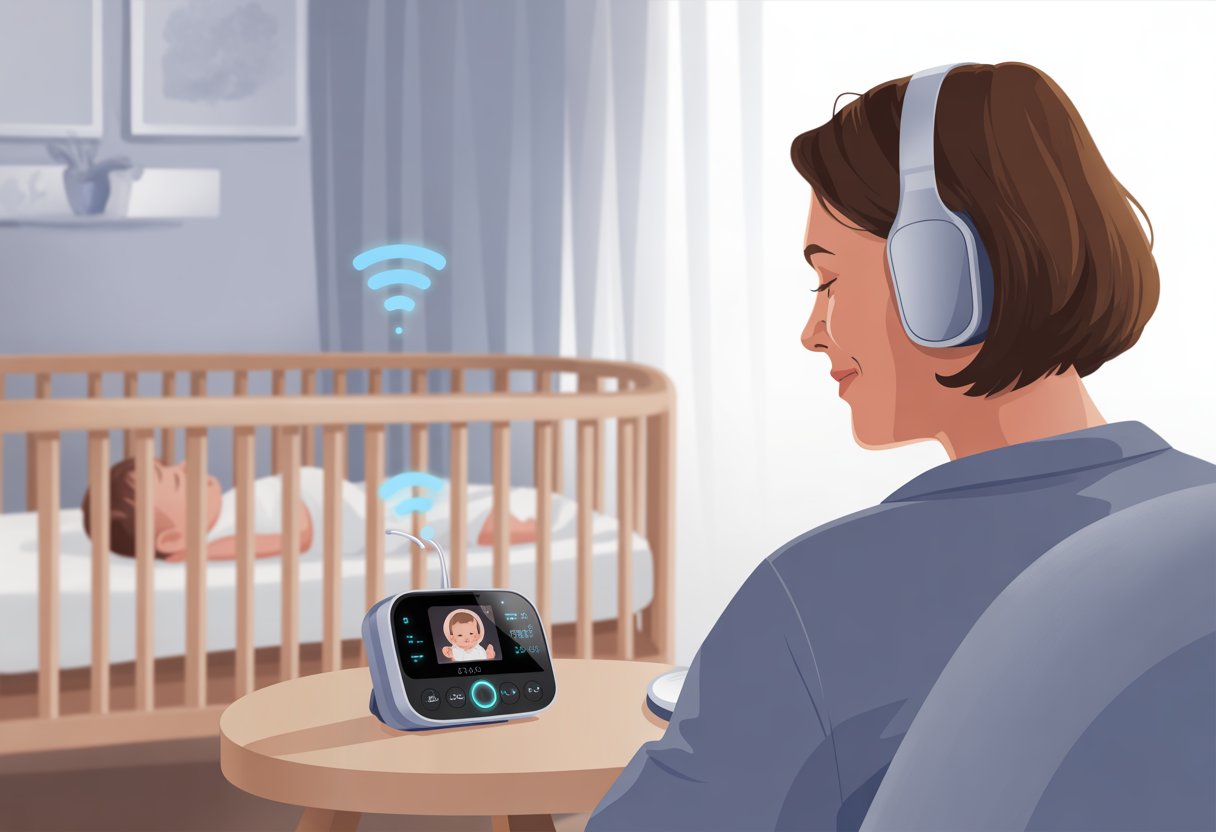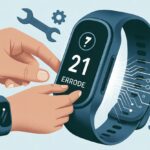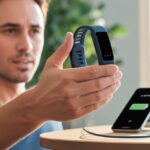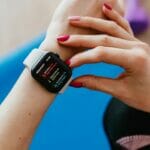Ever wish you could listen for your baby’s cries and still dance around the living room with wireless headphones? You’re definitely not the only one—so many parents want the comfort of a baby monitor without being chained to some clunky, static-spewing speaker. Here’s the good news: you can use Bluetooth headphones with most baby monitors, so you can keep tabs on your little one and still move around like a normal human.

You don’t have to be a tech genius to pull this off. Some apps and little hacks let you connect your phone or headphones right to the monitor, which means you get clear audio and your hands stay free for, well, everything else.
If you thought parenting made you multitask, try wrangling Bluetooth headphones and a baby monitor at the same time. It’s a new level.
Honestly, who actually likes those old walkie-talkie receivers? Why not upgrade your setup, save your ears from screechy feedback, and give yourself a bit more freedom? Let’s make monitoring your sleeping beauty smarter—and just a whole lot more comfortable.
Understanding Bluetooth and Baby Monitors
Ever wonder how those signals actually travel from your baby’s crib to your ears? Let’s break down what Bluetooth really is, how baby monitors work, and why they don’t always get along.
What Is Bluetooth?
Bluetooth is that short-range wireless technology you use every day—those earbuds you lose under the couch? Yep, Bluetooth. It connects your phone, headphones, even your fridge sometimes, all without a single wire.
Bluetooth hops frequencies to dodge interference, which is pretty neat. But the range is only about 30 feet, usually just enough to cover the distance where you’ll lose your socks.
While Bluetooth is handy, it isn’t perfect for everything, especially if you want to send audio over long distances. You also have to watch out for interruptions from Wi-Fi, microwaves, or whatever else in your house wants to mess with wireless signals. So, while you can listen to music and pretend to clean, Bluetooth does have its limits.
How Baby Monitors Work
Traditional baby monitors are basically tiny walkie-talkies. One unit stays by the baby and picks up sound (or video, if you’re fancy), and the other stays with you so you can jump up at every weird noise.
There are two main types:
-
Radio frequency (RF) monitors: These use radio waves. They’re simple but not always secure.
-
Wi-Fi or smart monitors: These connect online so you can check in from your phone, even if you’re across town. But you need good internet for that.
Some baby monitors connect to iPhones, which is perfect if you want to watch your kid and scroll memes at the same time.
Why Compatibility Matters
If your Bluetooth headphones and baby monitor don’t speak the same “language,” you get radio silence—or, worse, ear-piercing static. Most baby monitors stick to their old-school radio waves and don’t support Bluetooth.
Many simply aren’t built to send audio directly to Bluetooth headphones. Forcing the connection usually leads to frustration, and you might end up using the monitor’s own speaker anyway, even if it’s loud enough to wake up the neighbors.
Compatibility depends on whether both devices can connect via Bluetooth, or if you need to get creative with smartphone apps, adapters, or some wild balancing act like folks suggest when they use their Bluetooth earbuds as a baby monitor. Before buying anything, double-check that your hardware plays nice together—or prepare for a high-tech game of hide and seek.
Checking If Your Baby Monitor Supports Bluetooth
Before you turn your headphones into baby-cry detectors, see if your baby monitor is even capable of becoming friends with Bluetooth. Nobody wants to waste hours mashing buttons and glaring at the manual. Here’s how you can figure it out—without losing your mind.
Reviewing Manufacturer Specifications
Start by grabbing the box, manual, or just searching online. Most companies will shout about “Bluetooth connectivity” in the specs if they have it.
If your baby monitor’s product page or instruction booklet doesn’t mention Bluetooth at all, it probably doesn’t have it. Look for words like “wireless audio,” “Bluetooth streaming,” or “compatible with Bluetooth headphones.”
Some brands hide this in the fine print or an online PDF manual. If you plan to connect through an app on your phone, check under the app features too. If you can’t find any of these details, you’re probably out of luck.
Identifying Bluetooth Symbols and Indicators
Now, let’s get visual. Baby monitors with Bluetooth usually show a small “B” logo or some icon that looks like a trident. Sometimes the screen flashes a Bluetooth signal when pairing is possible.
If you see an indicator light or an option in the settings menu that says “pairing mode,” odds are Bluetooth is there. You can also spot:
- Bluetooth logos on packaging
- Pairing or connection notifications on the monitor
- An LED that blinks or changes color when searching for a device
If all else fails, press a few buttons and see what lights up. Just try not to wake the baby.
Models That Play Nice with Bluetooth
Not every baby monitor is a social butterfly. Some popular models that work with Bluetooth headphones or apps include the Earbuds Baby Monitor: AirNanny. With this, you can just use your phone and earbuds—no clunky base station required.
This is especially handy for parents who like to move around or don’t want extra gear in the nursery. For more options, parents on Reddit often share their experiences with baby monitors that connect to Bluetooth headphones.
Other brands might need a Bluetooth transmitter or only offer Bluetooth through a companion app. Before you buy, check what others have said, look at the manufacturer’s site, or ask about Bluetooth in parenting forums—people there always have opinions.
Pairing Bluetooth Headphones with Your Baby Monitor
Connecting your Bluetooth headphones to a baby monitor sounds high-tech, but with a bit of patience, you can totally do it. You just need a few steps, a little troubleshooting, and maybe the patience of a saint.
Enabling Pairing Mode
Let’s start with making your headphones discoverable. Most Bluetooth headphones have a button—sometimes labeled “Power” or “Bluetooth”—that you need to hold down until a light starts blinking like it’s at a rave.
Your baby monitor needs to join in too. Not all monitors have Bluetooth, so double-check the manual or model number. If it does, there’s usually a pairing button or a menu in the settings.
Keep both devices close—within a foot. Bluetooth isn’t great with long-distance relationships during pairing. If you get a “Ready to Pair” alert, blinking light, or a cheerful ding, you’re on the right track.
Connecting Devices Step-by-Step
Ready to make these two friends? Grab your baby monitor and enter its Bluetooth settings. Sometimes this is hidden under “Audio Output” or “Wireless Devices.”
Scroll until you see your headphone’s name. If it doesn’t show up, don’t panic—just hit “Scan” or “Search” again.
See your headphones? Awesome. Tap to connect. Usually, there’s no password, but if you need one, try “0000” or “1234.” It’s not exactly Fort Knox, but it usually works.
If you’re using a phone as a monitor with an app—like the Earbuds Baby Monitor: AirNanny—it’s even easier. Just connect your Bluetooth headphones to the phone as usual and let the app do its thing.
Troubleshooting Connection Woes
If things aren’t working, double-check that both devices are actually in pairing mode. It’s basically the grown-up version of “Did you turn it off and on again?”
If your headphones don’t show up, make sure neither device is already paired to something else, like your neighbor’s TV or that old tablet you forgot about. Go into Bluetooth settings and “forget” any old connections.
Still not connecting? Try moving somewhere with less interference—WiFi routers and microwaves can ruin your Bluetooth party. Some monitors just aren’t built for headphone pairing.
In that case, using a phone or picking up a Bluetooth transmitter might be your best bet, like folks suggest in online tips.
And hey, if you’re really stuck, maybe call in your resident techie—otherwise known as your teenager.
Alternative Methods for Non-Bluetooth Baby Monitors
Some baby monitors are stuck in the past and don’t have Bluetooth. Don’t toss them out just yet. There are a few tricks to connect your trusty Bluetooth headphones anyway.
Bluetooth Audio Adapters: Your Secret Weapon
Imagine your baby monitor only has a headphone jack. It’s basically asking for a Bluetooth upgrade. A Bluetooth audio adapter plugs into the monitor’s headphone or audio-out port. This little gadget sends the audio right to your Bluetooth headphones, saving you from tripping over cords.
Look for these features:
- Portable size (fits in your palm)
- Long battery life (or USB charging)
- Simple pairing button
- 3.5mm audio input compatibility
Setup is easy. Plug the adapter into the monitor, turn on Bluetooth pairing, and put your headphones in pairing mode.
Just remember, some adapters work as both receivers and transmitters, so make sure you get the right one—or you might end up streaming music to your baby by accident.
Using Wireless Audio Transmitters
If adapters seem a little too tiny or mysterious, wireless audio transmitters might just be the next best thing. These devices usually cover longer distances and sometimes offer clearer sound—because honestly, who wants to hear static instead of those adorable baby snores?
Wireless transmitters work with both analog and digital monitors. We plug them into the audio output, pair them with our favorite Bluetooth headphones, and suddenly, we’re hands-free and can move around. Some models even reach up to 100 feet, so we can fold laundry, make coffee, or maybe even have a kitchen dance party without missing a single peep.
Quick tips to look for in a transmitter:
- Low audio delay (so the crying doesn’t catch us off guard)
- Stable connection
- Compatibility with various headphones
No tech skills needed here. If we can plug in a toaster, we can figure out a wireless transmitter. Before long, anyone visiting might assume we’re audiophiles—at least until the baby monitor static blows our cover.
Safety Considerations When Using Bluetooth Headphones
Let’s be honest—waiting to hear a baby cry through static, or worse, total silence, is nobody’s idea of a good time. Bluetooth can make life easier, but we still want things safe, sharp, and free from interference.
Hearing Baby Clearly
Surprises come with the territory when you have a baby. Add Bluetooth headphones, and suddenly, “Was that the baby or a random notification?” becomes the daily question. To make sure we catch the real sounds, we should:
- Check headphone volume: Too quiet and we miss the cries. Too loud and we might just jump out of our skin.
- Use one earbud: This helps us stay alert for other noises, like the mailman or, well, the fire alarm (tips here).
- Test before you need it: Let’s not wait for nap time to discover something isn’t working.
- Monitor connection range: Bluetooth only goes so far; a few walls can silence the baby completely.
- Choose headphones with a good mic: If we use two-way audio, our voice shouldn’t sound robotic.
We want to hear real baby noises, not just mystery static or a neighbor’s radio.
Minimizing Signal Interference
Bluetooth is awesome, but sometimes it acts like it’s dodging WiFi, microwaves, and every other gadget in the house. For a smoother connection, we should:
- Stay close to the baby monitor: The farther we go, the more likely we’ll hear beeps or nothing at all.
- Avoid Bluetooth traffic jams: Too many Bluetooth gadgets in one area can cause chaos (useful advice here).
- Keep devices updated: Updates squash bugs. If we ignore them, we might pay the price with a tantrum-worthy connection.
- Move away from thick walls: Thick walls eat Bluetooth signals. Keeping devices in sight helps.
- Use 5 GHz WiFi if possible: This can cut down on interference, since most Bluetooth gadgets use 2.4 GHz.
With these tricks, our headphones actually help instead of making things worse.
Tips for a Seamless Experience
Let’s face it: using Bluetooth headphones with a baby monitor feels futuristic—right up until something breaks. We want to dodge the drama of crying, beeping, and dropped connections. These practical tips can help us keep things running smoothly.
Maximizing Battery Life
Bluetooth headphones and monitors have a sneaky habit of running out of juice at the worst possible time. Let’s try to outsmart them. First, charge both headphones and the baby monitor before bedtime—no more “can I make it through the night on 5 percent?”
If either device has a power-saving mode, we should use it. Most Bluetooth headphones will shut off when not in use, but it’s worth double-checking. For those marathon naps, keeping an extra charging cable or portable battery nearby can save the day.
A quick checklist:
- ✅ Charge devices during the day
- ✅ Lower headphone volume for longer play
- ✅ Use one earbud to double standby time
Let’s treat battery bars like diapers: better to have too many than not enough.
Managing Range and Obstacles
Bluetooth isn’t magic. It hates walls, floors, and even the occasional suspicious houseplant. We need to keep expectations realistic so our connection stays as strong as our coffee. Most Bluetooth headphones top out at about 30 feet—enough for a victory dance, but not a trip around the block.
To avoid surprise dropouts:
- Stay within Bluetooth signal range
- Avoid big walls or thick doors (especially reinforced ones—Bluetooth is not Superman).
- Place the baby monitor and our phone/tablet near open doors or in the same room if possible.
For bonus points, maybe ask family to hold off on microwaving popcorn every five minutes. That microwave can mess with our signal faster than a toddler with spaghetti.
Doing a quick test run before naptime helps us find exactly where the connection drops. No guesswork, just a little detective work (and maybe some coffee). For more setup tips, check out using your phone and Bluetooth earphones as a baby monitor.
When Technology Goes Rogue: Common Issues and Fixes
Sometimes, our high-tech setups run into very low-tech problems. Suddenly, we’re playing detective, trying to figure out if the culprit is our Bluetooth headphones, the baby monitor, or something else in the house with a grudge.
Distorted Sound or Static
Honestly, nothing ruins a peaceful night like a blast of garbled static in your ear while you’re on baby duty. Static and distortion usually show up when devices are too close to other electronics or when someone turns on the microwave. It almost feels like the kitchen appliances are out to get us.
We can move the baby monitor away from TVs, routers, and especially that coffee maker that hums louder than the baby. Most Bluetooth headphones work better when they’re not near these troublemakers. If that doesn’t help, we should check if both devices are fully charged—low batteries often turn sweet baby sounds into robot noises.
Changing the WiFi channel in our router settings, or switching to a dual-band router, can also help. Less overlap with the baby monitor means fewer screechy feedback moments. This is especially true for monitors using the crowded 2.4 GHz band; see more tips on WiFi interference from baby monitors.
Random Disconnections
Few things test our patience like missing the end of a nap because the audio cut out again. Random Bluetooth disconnections usually happen when the signal gets blocked by walls—or that mysterious pile of laundry waiting to be folded.
To cut down on dropouts, we should keep the headphones and monitor within 30 feet (or less, if our house is made of concrete and dashed dreams). Keep doors open, avoid putting devices on the floor, and definitely don’t hide them behind big metal objects. Those stacks of baby books? Wireless signals hate them.
Interference can come from ordinary things: cordless phones, other baby monitors, or even the neighbor’s WiFi. If disconnections keep happening, we should try pairing the headphones again or updating the firmware. Sometimes, a fresh start is all our cranky gadgets need—kind of like us after a cup of coffee.
Conclusion: Rock On, Superparent!
We made it—our ears are happy, the baby’s safe, and hey, no one’s tripped over any wires today. Using Bluetooth headphones with a baby monitor feels a little futuristic, right? It’s like we’re in a sci-fi flick, but with more spit-up and way less laser tag.
Parenting? It’s already a juggling act. Why not free up our hands (and, honestly, save a bit of patience) with a few smart tech upgrades?
Bluetooth headphones let us fold laundry, make snacks, or even sneak in a three-second nap. We can listen for those soft baby sounds like the ninja-parents we are. Not bad, huh?
Quick Wins:
- No cords = less chaos
- More mobility = more snacks
- Discreet alerts = fewer baby wake-ups
We’re not just getting by—we’re actually thriving, and maybe even doing it with a little style. Plus, who’s going to argue with having an excuse to wear headphones all day? If anyone asks, just say you’re “monitoring vital baby signals.”
Let’s keep rocking those headphones, keep the baby monitor nearby, and keep crushing it as the superparents we really are!
- Best Bluetooth Headphones for Airplane Travel: Drown Out Crying Babies in Style - December 8, 2025
- How to use Bluetooth headphones with an intercom system and Finally Escape Tangled Wires - December 7, 2025
- Best Fitness Trackers for Silent Alarms: Wake Up Without the Drama - December 7, 2025






